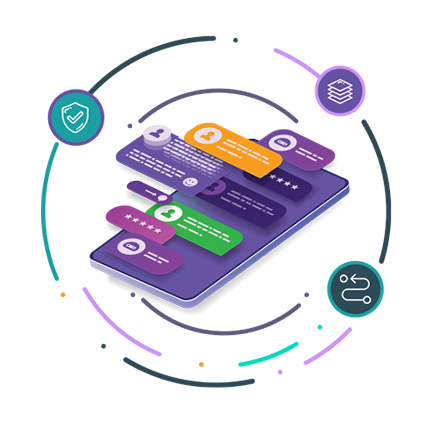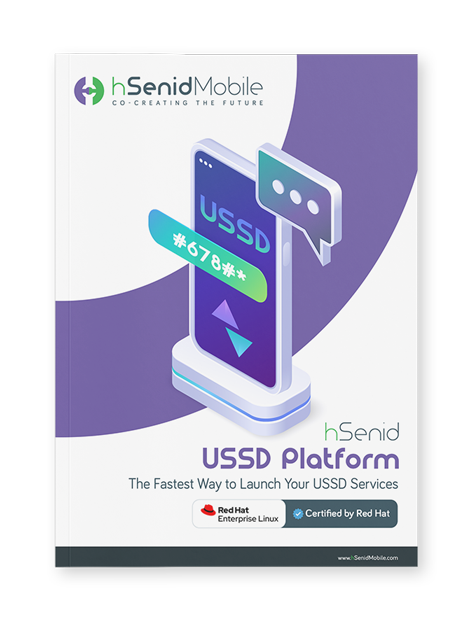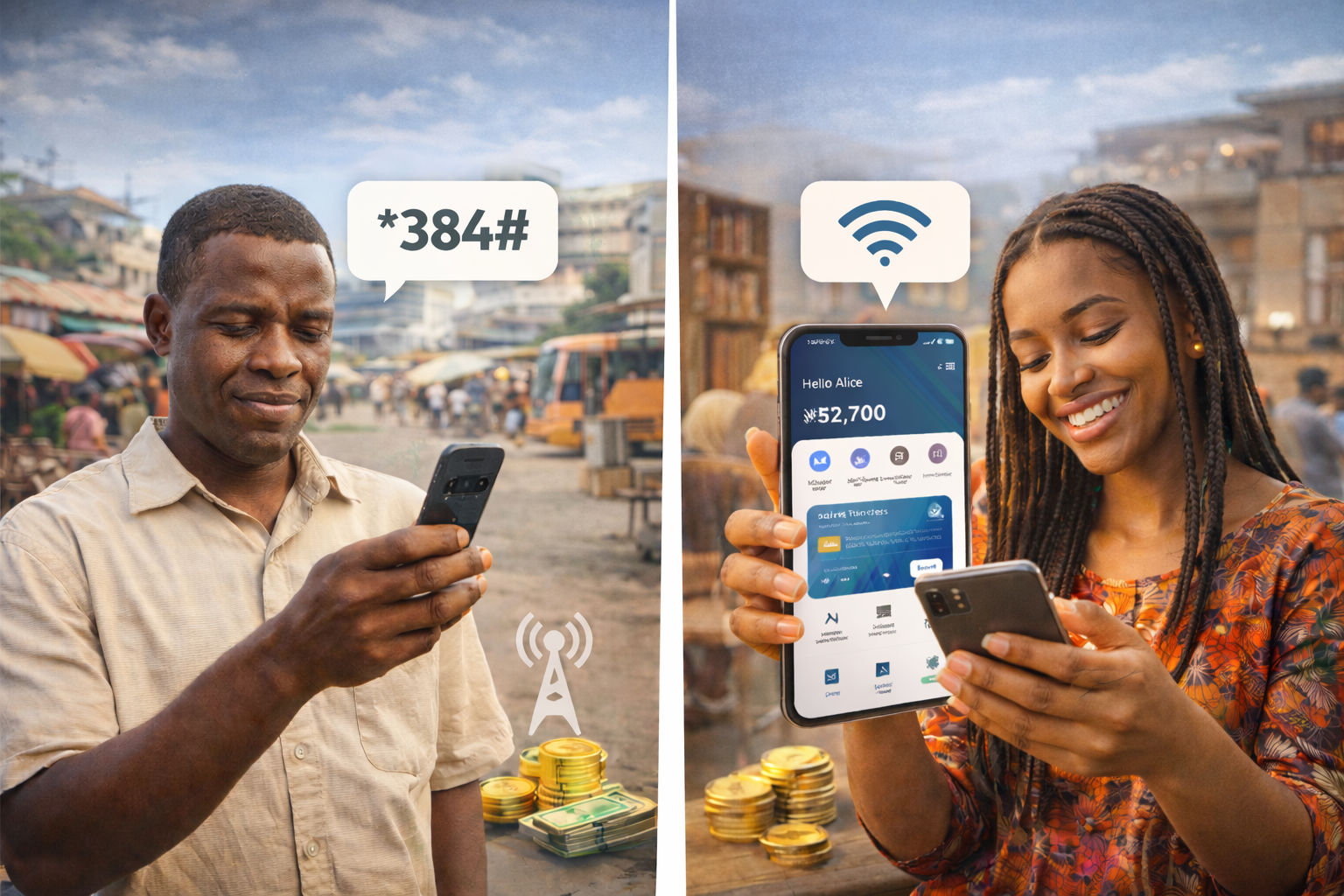For many businesses, especially those serving diverse markets from urban
centres to remote villages, the challenge isn’t just sending messages, it’s
sparking conversations that feel immediate and personal. Picture a vendor at a
bustling street market, without data access, dialing a short code to check
stock availability, place an order, or redeem an offer in seconds. That’s the
power of Unstructured Supplementary Service Data (USSD): a session-based
protocol that lives on every GSM-enabled handset. While SMS remains a trusted
broadcast channel, USSD transforms your service into a mini-app on the user’s
keypad, enabling real-time interactivity without downloads or data charges. By
partnering with a reliable USSD gateway provider, you open a direct line to
your customers—no barriers, no waiting, just seamless engagement across every
device.
Before diving into details, let’s explore what makes USSD essential for modern communications. Unlike SMS, which delivers messages asynchronously, USSD creates a session-based channel that enables instant, two-way exchanges between your application and the end user’s device. This means zero latency, no message queuing, and an effortless flow of information back and forth. More importantly, USSD works on any GSM-enabled handset, ensuring that customers in regions with low smartphone penetration still enjoy the same real-time experience as those with advanced devices.
At its core, USSD uses short codes, typically five digits starting with an asterisk (*) or hash (#), to initiate a session between the user and the service provider. When a user dials a USSD code, the mobile network routes it directly to your gateway, which responds with menu-driven prompts guiding the user through each step. Because interactions happen in real time, users don’t need to wait for network acknowledgments or worry about delayed responses. This immediacy makes USSD ideal for balance inquiries, OTP verification, and one-click purchases.
USSD combines the reliability of SMS with the interactivity of an app, without requiring downloads or data. It is also highly cost-effective: providers typically charge less for USSD sessions than for premium SMS, and session-based billing means you pay only for interaction time. Additionally, because USSD operates outside the data network, it is not affected by fluctuating mobile internet speeds or connectivity black spots. For businesses, this translates into a communication channel that is both budget-friendly and universally accessible.
As you evaluate providers, focus on three core capabilities that will drive the biggest impact on your mobile strategy.
Selecting the ideal partner requires looking beyond coverage maps and price lists. Pay close attention to integration flexibility, platform reliability, and the quality of customer support. Let’s break down the most important factors.
A reliable USSD gateway provider empowers businesses with instant, interactive, and cost-effective mobile communication, transforming customer engagement, streamlining transactions, and guaranteeing service availability across any device. Whether you need real-time promotions, simplified payment flows on feature phones, or assured delivery in low-connectivity areas, USSD bridges the digital divide. To lead the next wave of mobile engagement, partner with a provider offering extensive carrier reach, robust APIs, and responsive support. Learn how hSenid Mobile USSD integrates seamlessly with your systems to boost satisfaction and expand your mobile reach like never before.
Why Choose a USSD Gateway Provider?
Before diving into details, let’s explore what makes USSD essential for modern communications. Unlike SMS, which delivers messages asynchronously, USSD creates a session-based channel that enables instant, two-way exchanges between your application and the end user’s device. This means zero latency, no message queuing, and an effortless flow of information back and forth. More importantly, USSD works on any GSM-enabled handset, ensuring that customers in regions with low smartphone penetration still enjoy the same real-time experience as those with advanced devices.
Understanding USSD Technology
At its core, USSD uses short codes, typically five digits starting with an asterisk (*) or hash (#), to initiate a session between the user and the service provider. When a user dials a USSD code, the mobile network routes it directly to your gateway, which responds with menu-driven prompts guiding the user through each step. Because interactions happen in real time, users don’t need to wait for network acknowledgments or worry about delayed responses. This immediacy makes USSD ideal for balance inquiries, OTP verification, and one-click purchases.
Benefits of Using USSD
USSD combines the reliability of SMS with the interactivity of an app, without requiring downloads or data. It is also highly cost-effective: providers typically charge less for USSD sessions than for premium SMS, and session-based billing means you pay only for interaction time. Additionally, because USSD operates outside the data network, it is not affected by fluctuating mobile internet speeds or connectivity black spots. For businesses, this translates into a communication channel that is both budget-friendly and universally accessible.
Three Key Ways the Right USSD Gateway Provider Can Boost Your Mobile Reach
As you evaluate providers, focus on three core capabilities that will drive the biggest impact on your mobile strategy.
- Enhancing Customer Engagement: Engaging your audience means more than broadcasting promotions; it’s about creating immersive experiences that capture attention and inspire action. A robust USSD gateway provider lets you design multiple-choice menus, quick surveys, and gamified promotions that customers navigate with a few keypad taps. For example, a retailer can deploy a flavor-quiz promotion with instant rewards, or a telecom operator can gather feedback on network performance, all with minimal development overhead. These real-time touchpoints foster loyalty and generate actionable insights for future campaigns.
- Simplifying Mobile Transactions: In industries such as banking, insurance, and retail, frictionless transactions are a competitive differentiator. With USSD, users can check account balances, transfer funds, or pay bills through a simple menu flow. When integrated with SMS, transactional confirmations and alerts are delivered instantly, keeping users informed every step of the way. Automatic session timeouts also reduce abandoned transactions, ensuring higher completion rates and improved customer satisfaction.
- Ensuring Reliable Communication: Nothing undermines customer trust like failed messages or delays. USSD sessions function independently of mobile data, so even in areas with weak 3G or 4G coverage, customers can access critical services. This reliability makes USSD ideal for emergency alerts, real-time notifications, and support menus. By choosing a gateway provider with strong operator partnerships and robust failover mechanisms, you guarantee service availability and maintain customer confidence.
Choosing the Right USSD Gateway Provider
Selecting the ideal partner requires looking beyond coverage maps and price lists. Pay close attention to integration flexibility, platform reliability, and the quality of customer support. Let’s break down the most important factors.
Factors to Consider
- Integration capabilities: Verify that the provider offers RESTful APIs, SDKs, or middleware adapters compatible with your systems.
- Network coverage: Ensure direct connections to all major carriers in your target markets.
- Security and compliance: Seek PCI DSS, ISO 27001, and local regulatory certifications for data protection.
- Scalability: Confirm the ability to handle peak session volumes and scale instantly during promotions or events.
- Customer support: 24/7 SLAs and dedicated technical account managers can be the difference between uptime and downtime.
Evaluating Potential Providers
- References and case studies: Review success stories from companies in your industry to gauge performance.
- Pricing transparency: Opt for clear, session-based pricing models and watch for hidden setup or maintenance fees.
- Trial environments: Test the platform with real use cases before committing to a long-term contract.
- Performance metrics: Request data on average response times, session success rates, and throughput statistics.
- Contract flexibility: Providers offering month-to-month agreements or adjustable plans will better support evolving business needs.
Conclusion
A reliable USSD gateway provider empowers businesses with instant, interactive, and cost-effective mobile communication, transforming customer engagement, streamlining transactions, and guaranteeing service availability across any device. Whether you need real-time promotions, simplified payment flows on feature phones, or assured delivery in low-connectivity areas, USSD bridges the digital divide. To lead the next wave of mobile engagement, partner with a provider offering extensive carrier reach, robust APIs, and responsive support. Learn how hSenid Mobile USSD integrates seamlessly with your systems to boost satisfaction and expand your mobile reach like never before.








